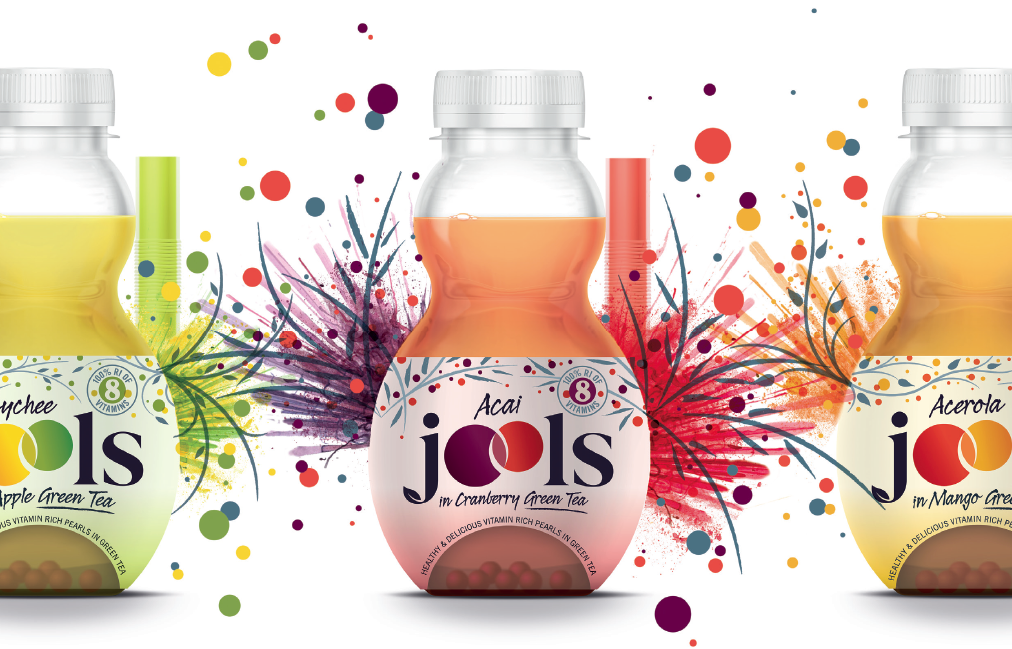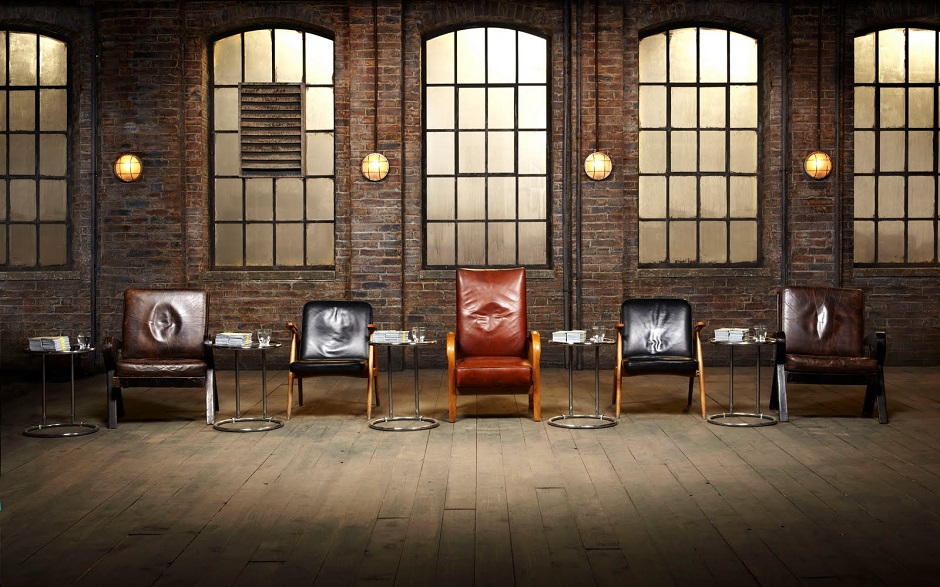
If you’re about to launch your own food or drinks brand, then you’re probably asking yourself where to start. It’s exciting and nerve-racking, but stepping into the great unknown can also be overwhelming. Maybe this sounds all too familiar? I’ve met so many young (and older) entrepreneurs who dream of introducing the world to their fantastic new brand. Whether it’s a healthy new range of drinks or a delicious food brand, their belief in their product is always unquestionably pure, and their passion is true.
“Selling into mainstream retailers has its own unique character that can be difficult to navigate for first-time brand owners.”
So why do only 7% of them make it to market and survive – or to put it another way, how come so many brands fail within the first 18 months? Most young brands make it in the cottage industry – selling to local delis and bars that support the passion of entrepreneurs. But the aspiration of quantity usually proves too tempting, and they head off down the well-trodden path into the world of retail buyers. The truth is, selling into mainstream retailers has its own unique challenges that can be difficult to navigate for first-time brand owners.
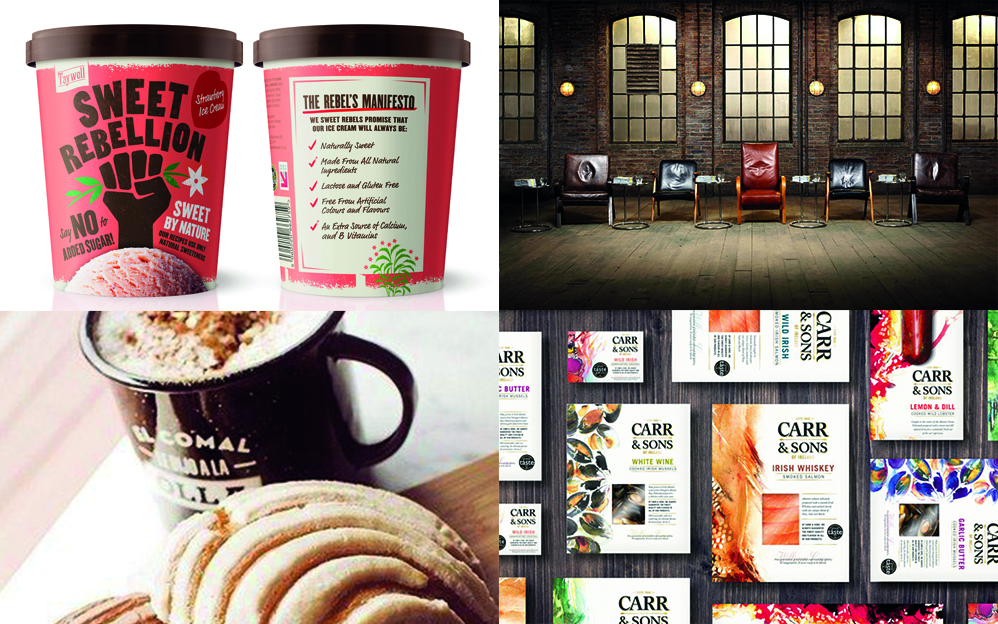
I often liken this process to Dragon’s Den. If you’ve seen enough episodes, you’ll know what I’m talking about. The ten second sales pitch. The carefully planned return on investment. The target market identified. The distribution sorted. The realisation of brand clearly communicated to all within the channels. So not only do you have to speak to your end consumer, but you also need to communicate succinctly with the buyers – the gateway keepers.
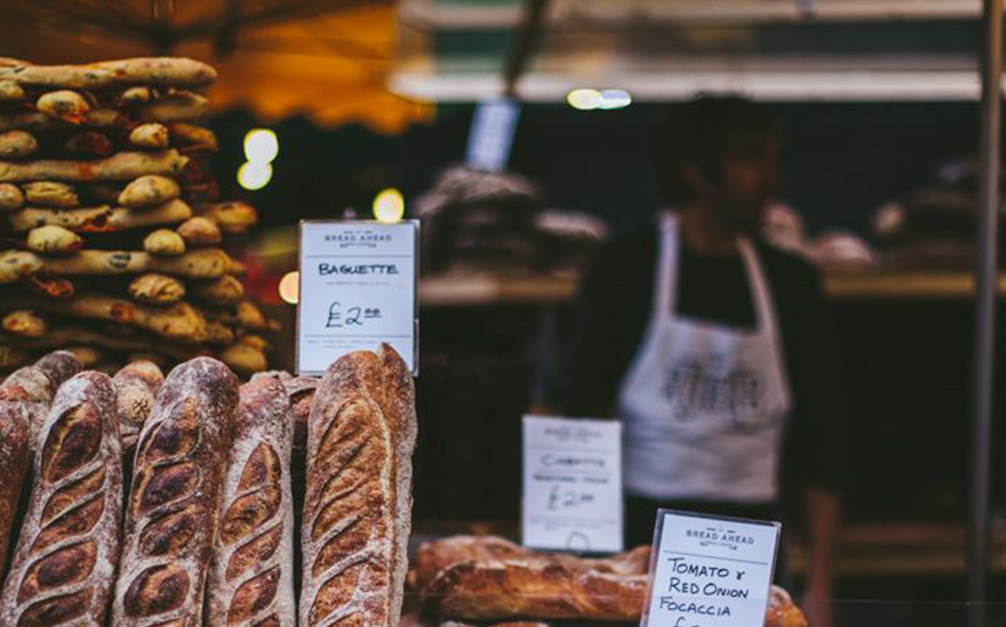
How do you do this? Well, you need to know your market place, what’s selling right now, what’s trending, what’s being picked up by consumers – plus other considerations such as promotion and placement. That’s before you start thinking about price and margin control (retailers typically take a minimum of 40%) and then deciding whether it’s even worth it knowing that you still need to make and sell your product. And let’s not forget, if you’re a new brand then you may not pay ‘shelf charges’, but you should probably budget for it – just think of it as rent! It’s a complicated game with a steep learning curve. The process of getting your product from being ‘made’ to ‘shelf ready’ is complex, and each stage costs you money. I’d love to make this easy for you, but I am not in control and therefore, I can’t! Before you despair, remember that new is exciting for consumers, which makes it exciting for retailers. New is good because it sells! To help you along the way, I’ve put together an illustration (below) to show the way we approach new brand launches here at Honey.
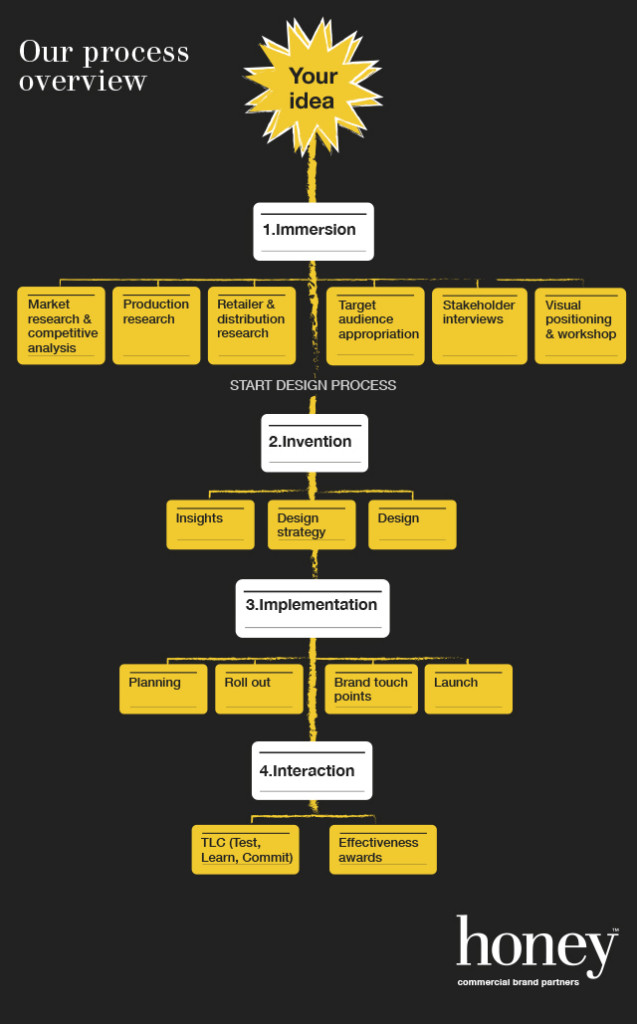
This is exactly how we work with our own clients many of which you can now see on the supermarket shelves! After all, visualisation is the power of selling, and it’s easier for us to engage with images than words.
Branding – which is Honey’s area of expertise – is about understanding the entire process of starting a new food and drinks brand from the initial idea through to realisation, and to engage consumers through the power of carefully considered brand identity and packaging design. And so far we’ve won 11 DBA Awards for the effectiveness of our designs and the return on investment we offer our clients.
“Branding is about understanding the entire process of starting a new food and drinks brand from the initial idea through to realisation.”
It’s not simple, but with great communication and chemistry between you (the entrepreneur) and us (the branding experts here at Honey), can give you the best possible chance at breaking past the 18 month mark and making it to market.
Take a look at some of our case studies for inspiration!
